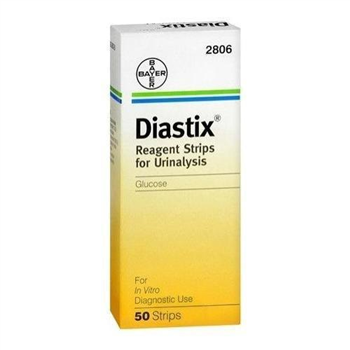Diagnostic Dipsticks for Dogs
Diagnostic Dipsticks for Dogs offer a fast and straightforward method for assessing key health indicators through a dog’s urine. These multi-parameter testing strips are designed for in-practice or at-home use and provide a visual indication of possible underlying health concerns by detecting chemical substances present in the urine.
Each strip contains several reactive pads, with each pad formulated to change colour in the presence of a specific compound. These compounds can include glucose, protein, ketones, blood, pH, and other substances relevant to dog health. By interpreting the colour changes against a reference chart, users can obtain important information about a dog’s health within minutes.
Urine dipsticks are often used as part of a broader health screening process. They are especially useful for monitoring dogs with known conditions such as diabetes, urinary tract infections, or kidney issues. They may also ass...
Diagnostic Dipsticks for Dogs
Diagnostic Dipsticks for Dogs offer a fast and straightforward method for assessing key health indicators through a dog’s urine. These multi-parameter testing strips are designed for in-practice or at-home use and provide a visual indication of possible underlying health concerns by detecting chemical substances present in the urine.
Each strip contains several reactive pads, with each pad formulated to change colour in the presence of a specific compound. These compounds can include glucose, protein, ketones, blood, pH, and other substances relevant to dog health. By interpreting the colour changes against a reference chart, users can obtain important information about a dog’s health within minutes.
Urine dipsticks are often used as part of a broader health screening process. They are especially useful for monitoring dogs with known conditions such as diabetes, urinary tract infections, or kidney issues. They may also assist in identifying early signs of illness before clinical symptoms become obvious.
How Diagnostic Dipsticks Work
Diagnostic dipsticks operate through a simple chemical reaction between the substances in urine and the reagent chemicals on the test pads. Each pad on the strip is sensitive to a specific parameter. When the strip is dipped briefly into a fresh urine sample, each pad reacts by changing colour according to the presence and concentration of the target substance.
The most common parameters measured on canine urine dipsticks include:
- Glucose – Elevated glucose levels in urine may indicate diabetes mellitus or stress-related hyperglycaemia.
- Protein – The presence of protein in urine (proteinuria) can be associated with kidney disease or other systemic conditions.
- pH – Urine pH helps assess the acidity or alkalinity of the urine, which can be useful in evaluating urinary tract health and metabolic status.
- Blood – Blood in the urine (haematuria) may be caused by infection, inflammation, trauma or urinary tract stones.
- Ketones – Ketones are by-products of fat metabolism and may appear in the urine during periods of inadequate energy intake, diabetes or other metabolic disorders.
- Leucocytes and Nitrites – These may be indicators of urinary tract infections.
- Specific Gravity (on some dipsticks) – This estimates the concentration of the urine and can help assess hydration status or kidney function.
Once the test strip has been dipped and removed from the sample, it should be laid flat for a set amount of time, usually between 30 and 120 seconds, depending on the manufacturer’s instructions. The colours on each pad are then compared with a reference guide provided on the packaging to interpret the results.
Uses in Monitoring and Early Detection
Urine dipstick testing is a non-invasive and quick method for monitoring a dog’s internal health. It is often used by veterinary professionals as part of routine check-ups or diagnostic evaluations. For dog owners managing a pet with a chronic condition, dipsticks can provide helpful day-to-day insights between veterinary visits.
They can also be used in a preventative health context. Regular screening with dipsticks can support early detection of emerging conditions, especially in senior dogs or breeds predisposed to urinary or metabolic disorders. Early identification allows for timely intervention, potentially improving long-term outcomes.
Understanding the Parameters
Each test pad provides a specific piece of information:
- Glucose: Normally absent in healthy urine. Persistent presence should be investigated.
- Protein: Small amounts may be normal, but elevated levels often warrant further testing.
- pH: Normal canine urine typically ranges from slightly acidic to neutral. Significant deviation can be associated with infections or dietary imbalances.
- Blood: May appear as a result of infection, inflammation, or trauma. Microscopic amounts can be detected even when the urine appears normal in colour.
- Ketones: Indicate altered energy metabolism. Their presence should prompt further evaluation.
- Leucocytes and Nitrites: When found together, they may suggest bacterial activity within the urinary tract.
- Specific Gravity (if included): Helps to assess kidney function and hydration. Low readings may point to renal dysfunction; high readings may indicate dehydration or concentrated urine.
Ease of Use
Diagnostic dipsticks are designed for ease and speed. No special equipment is required beyond a clean container for urine collection. The process involves dipping the strip briefly, waiting the appropriate time, and visually comparing the pads to the provided chart. Most results can be obtained within two minutes.
For best results, it is important to use fresh urine samples and follow the handling instructions carefully. Dipsticks should be stored in a cool, dry place and kept in their original container until use, as exposure to moisture or light can affect their accuracy.
Practical Considerations
When using dipsticks at home, interpretation of the results should always be done with care. While the strips can provide useful screening data, they are not a substitute for professional diagnosis. Any abnormal result should be followed up with a consultation from a veterinary practitioner.
Veterinary practices may use diagnostic dipsticks alongside microscopy, culture, or blood tests to build a more complete clinical picture. At home, they serve as a valuable tool for regular monitoring and health checks.
Dipsticks can be particularly helpful during treatment plans that involve medication for urinary or metabolic issues. They allow pet owners to observe trends in the pet’s urine profile, which can help inform ongoing care.








